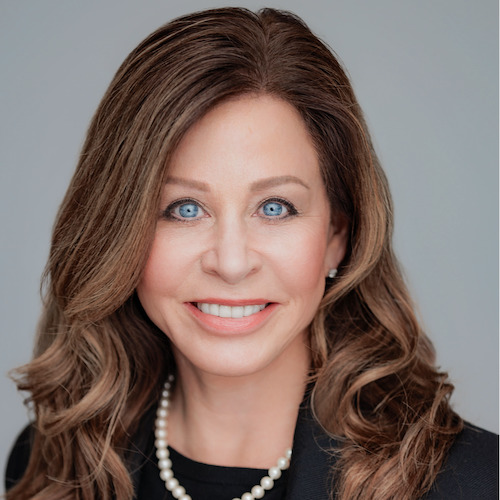
Fifteen years ago, operators set out to revolutionize dated senior living models that looked and functioned more like an institution than a place older adults wanted to call home.
Here we are, 15 years later, and senior living represents the convergence of the real estate, hospitality and healthcare sectors, leveraging every available technology and catering to a “choosier” consumer with an ever-expanding list of expectations and requirements.
Progress is impossible without change, but 15 years ago, we never could have imagined just how much or how quickly we’d change! Consumer demographics have evolved, regulations have intensified and ownership involvement has expanded. The proliferation of products, models and technology have led to the consumerization of senior living and care. And whether welcomed (like innovation) or unwelcomed (like pandemics), rapid change came with a growing list of concerns related to quality, regulation, financing, acuity and workforce challenges. We’re left wondering, what’s next?
This year, Sonata Senior Living celebrates its 15-year milestone as an owner, operator and management company, ergo we are more fit for forging the path forward. To recognize the milestone, it felt appropriate to survey how far we’ve come, only to gain a new appreciation for how far we have yet to go. Join me in a 15-point walk down memory lane.
- Longevity. You may remember that, 15 years ago, comfort and care were enough. Now, those features are only part of the equation. Retirement is a decades-long proposition for many, underscoring the need to uphold the fundamental tenants of assisted living and promote a higher quality of life. But quality of life looks entirely different today than it did when we built our first community.
- Bells and whistles. While aging into senior living, baby boomers (now aged 58 to 77) now arrive at our doors with a different set of expectations. To stay competitive, owner-operators are pulling out all the bells and whistles. Expectations have transcended care into the realm of concierge service, wellness and longevity, and life enrichment designed to impart purposeful living. Things that once differentiated us — such as exceptional service and luxury amenities — are redundant.
- Demographics. Whether or not they expect to pay for it, tech-savvy boomers demand more from senior living than their predecessors and have accumulated the wealth to pay for it. En masse, boomers are one the most economically influential generations driving the design of communities today. Modern day consumers are looking for more choices, more programs and more adventure, forcing us to reimagine not only how we design and build communities, but how we market, manage and deliver care and services in them.
- Acuity. Even though we are living longer, we may not be living more healthfully. Heart disease, Alzheimer’s disease and other forms of dementia, cancer and other chronic diseases are on the rise. Combined with a longer lifespan, chronic disease leads to higher healthcare needs, which in turn creates a need for more services at all levels of the long-term care continuum. Will we have enough memory care to meet growing demand, will the middle market be able to afford it and how do we respond to high rates of attrition?
- Models. New models recast the concept of senior living, and new personas redefined how we operate. Some 15 years ago, developers had the foresight to start building with boomers in mind, giving rise to the mixed-use, intergenerational, urban and affinity models we see today. Emphasis on fitness and food caters to health-conscious consumers that want to live with more purpose and choice, whereas tech-driven communities personalize engagement with prospects at every touchpoint. Within a decade, we’ve witnessed the rise of new service lines, products catering to active adult, and a shift toward value-based care models.
- Agreements. The number and variety of payment plans are exceeded only by the number and variety of new facilities. Over the better part of a decade, the growing complexity of both buying and selling senior housing has created as many questions for consumers as it does answers. In 2023 and beyond, we’ll continue to question whether and how we’re able to meet the middle market demand for senior housing and who will absorb the costs.
- Owners. The REIT Investment Diversification and Empowerment Act of 2007 allowed healthcare investors the ability to share in net operating income, giving rise to the joint venture model that dominates regional senior living providers today. This new model created ample opportunity for new partnerships in operations and cash flow, thus becoming an engine for new construction. Operators such as Sonata Senior Living began working with multiple partners, each vested in the success of the project and driven to assure value creation through innovation.
- Safety. Technology is reshaping senior living in countless ways and permeates every facet of operations today. From the artificial intelligence that predicts needs to wearables that transmit information, new tools have given us the means to intervene sooner with implications to both safety and quality of care. Even the air quality is cleaner now than it was a decade ago as operators consider new ways to reduce the impact of future pandemics.
- Internet. Fifteen years ago, referrals drove the lion’s share of senior living inquiries. With the emergence of search, websites, content marketing and automation, digital sources are attributed to more, but inherently less-qualified, inquiries, forcing changes in the way we approach sales and marketing. Many operators now allocate a significant share of marketing spend to digital strategies that target a more informed, educated consumer.
- Communication. Mobile apps, virtual assistants, email automation, chat — many tasks now are carried out by tech-enabled software and applications designed to deliver a personalized, relevant and seamless experience. Along with the proliferation of online platforms, personal data now are used to provide personalized programs, living options and even pricing models, catering to the consumers’ preference for more choices.
- Talent. Sophisticated recruitment, orientation, training, education and employee retention strategies leverage technology, whereas 15 years ago, there were fewer positions to fill and they were filled with less frequency. Workforce shortages are nothing new in senior living, but the confluence of pandemic, inflation and financial pressures created a perfect storm, exacerbating workforce development challenges. Necessity is the mother of invention, which we have seen play out as we rebuild our essential workforce.
- Regulation. Over 15 years, with every small regulatory revision came a large or, at best, disproportionate effect on operators’ ability to balance resident experience with the appropriate level of oversight. To this day, the scale is teetering.
- Reform. To ensure safety, senior living communities are more accountable, effecting new standards in operations and reporting, while tort reform lags behind. Add to that fragmented payer systems and new business models which over 15 years created disparities in quality of care.
- Cost. The average annual cost of assisted living 15 years ago was around $36,000, according to Genworth. Today, the average annual cost is somewhere between $48,000 and $54,000. In 2008, the country was struggling with the US housing crisis, causing many older adults to wait it out. Comparatively, many housing markets experienced a pandemic “boom,” aiding operators on the road to occupancy recovery.
- Growth. Despite the changed landscape, senior living continues to be “ripe for growth.” Long regarded as resilient over other commercial real estate assets, investors are anticipating favorable returns in the wake of changing demographics and growing demand. Lenders continue to treat senior living as a growth sector despite challenges related to interest rates, inflation and operational costs.
The economic environment we find ourselves in today eerily resembles the economic climate of our founding year, which was defined by the collapse of the housing market and radical reorganization of the banking industry. It’s anyone’s guess how senior housing will acclimate to compressed margins, rising costs and increasing regulations while still managing to meet the evolving demands of older adults.
Fifteen years of experience helps, but it’s also a drop in the bucket, particularly when the bucket keeps changing its shape. Even as we responded to a new set of consumer expectations, re-envisioned and rebuilt communities, it’s possible we haven’t begun to scratch the surface. Older Americans will soon outnumber their children — something that will change the face of senior living and change the world in ways we have yet to imagine.
Shelley Esden is president and CEO of Sonata Senior Living, chair of the Florida Senior Living Association and a 2023 McKnight’s Women of Distinction Hall of Fame honoree.
The opinions expressed in each McKnight’s Senior Living guest column are those of the author and are not necessarily those of McKnight’s Senior Living.
Have a column idea? See our submission guidelines here.


